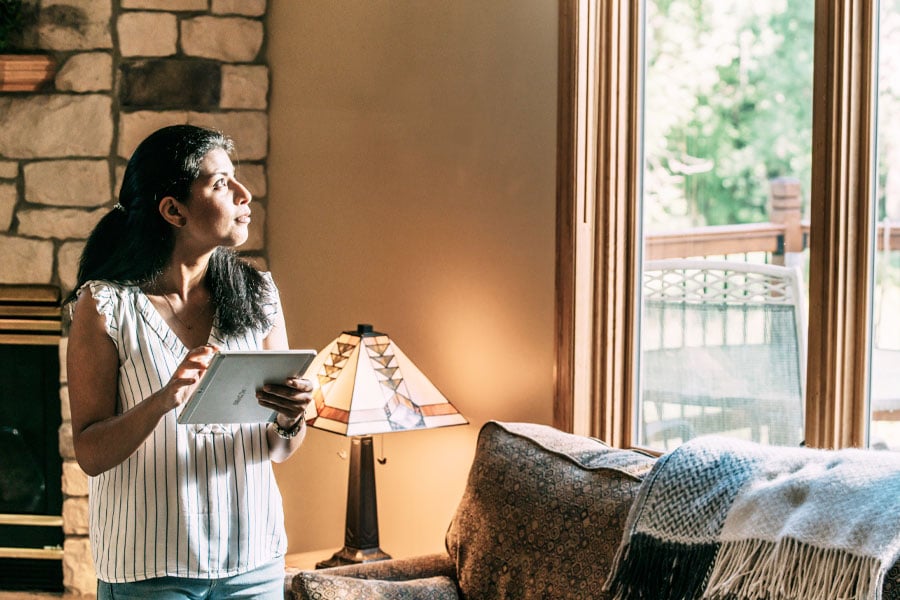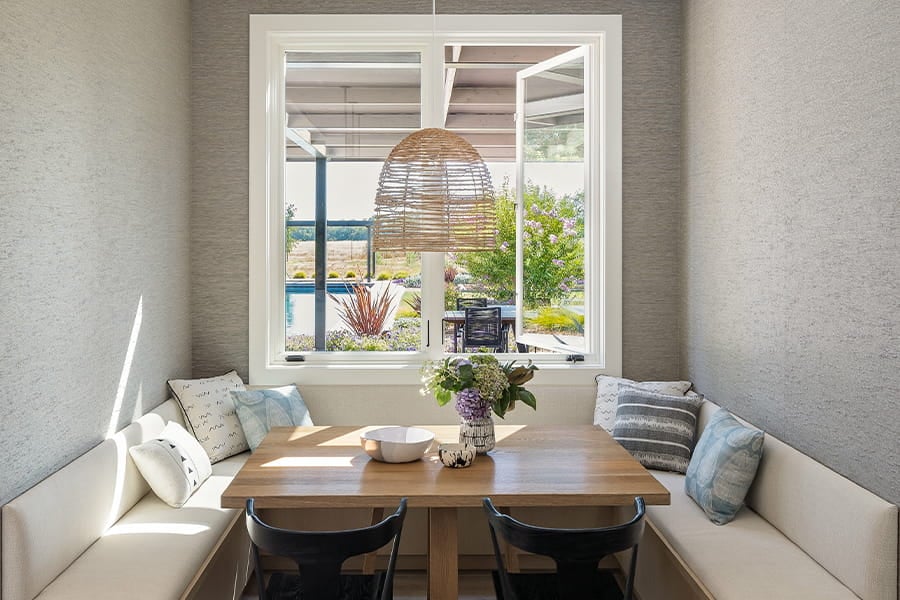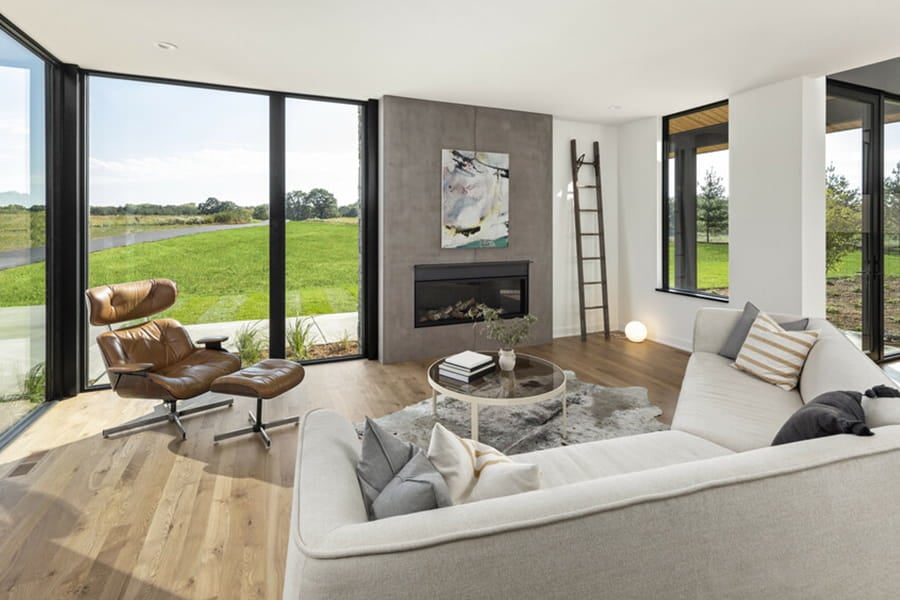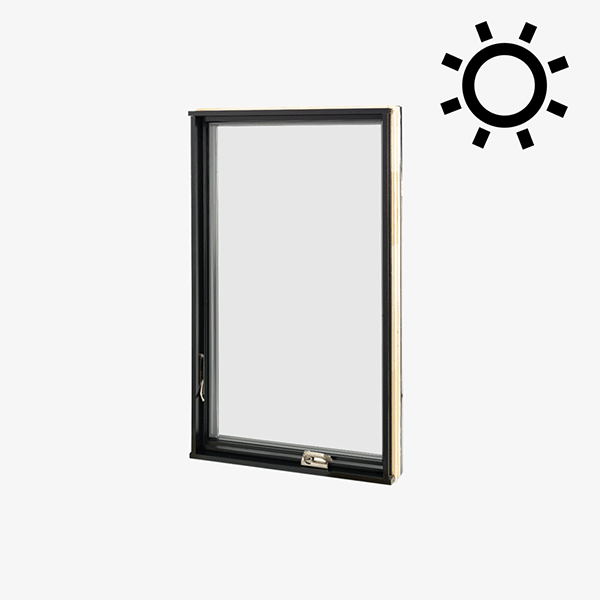Tips
3 steps to choosing the right windows

Picking out windows, like every home project, requires a lot of decision-making. But all that decision-making becomes easier when you’re working toward a defined vision. The questions below are designed to help you start digging into your needs and preferences so you can begin defining your vision.
Get the Window Selection Guide!
1. What type of windows do you want?
First things first, when we talk about types of windows, we’re talking about the way a window is designed to open (or operate). For example, casement windows crank outward to open whereas single and double-hung windows slide vertically to open.
Sometimes, deciding on window type is as easy as replacing what you currently have or going with what your architect specified in their blueprints. Other times, however, you might have big dreams.
If you’re wondering what types of windows might work best in your home, here are a few ways to decide:
- Consider the style of your home: Is it more traditional, more modern, or something in between? For ideas about which windows go well in a traditional home, look up your home’s architectural style in our Home Style Library. We also have tips on picking out modern windows. If you’re looking to combine traditional and modern styles, find inspiration from real-life homeowners in the projects section of our blog.
- Consider the room: The right window in the right place can be magic. For example, fresh air is essential in a kitchen, and a casement window above a kitchen sink is a popular choice because it’s much easier to crank open a window than to lean over the sink and try to push up a hung window. Windows, like any aspect of your home’s design, can make everyday life easier and more beautiful when they are well planned. Get some tips on the best windows for every room.
- Consider the layout: How will you access your windows? Think about whether a window is in a flow space, like a hallway, or a hangout space, like a living room. For example, you might not want an outward opening casement window next to a small deck or balcony because it will take away from that space. Along these same lines, don’t forget to think about furniture placement. How might this impact your access to a window?

Casement windows were a perfect choice for this breakfast nook because they can be easily cranked open, even from a seated position.
Now let’s talk a bit about dreaming big. Did you know it’s possible to enlarge windows and create totally unobstructed indoor/outdoor living spaces? One way to do this is with our pass-through windows, which are perfect for connecting a kitchen to an outdoor eating area. They can create a totally new and free-flowing experience in your home that will wow your guests. Just be sure to connect with your contractor about making it happen. They will be key to bringing your dreams to life — whether they’re dreams of more light, better outdoor living, or something else entirely.
2. What look are you going for?
Windows are inherently customizable. After all, you get to pick out type, shape, size, color, grilles, and hardware. When you combine all these details, you can create a look that complements your home. Here’s how to get started deciding on these details:
- Size and shape: These aspects of a window’s design are often informed by a home’s style. You can visit our Home Style Library to look up your home’s architectural style. Or if your home’s style is less defined, you could start by thinking about windows that match your home’s scale. For example, if your home is tall and skinny, you might want windows that are similarly proportioned.
- Color: Windows last for decades.* They could very well outlast your home’s paint color. So, you want to get this detail right. You can start gathering color inspiration by looking around you. There are particular colors associated with regions, architectural styles, and even home styles. Keep in mind that with some product lines you can have one color in the interior and another on the exterior. If you need some help, check out this advice from Sherwin-Williams.
- Grilles: Generally, grilles are considered a more traditional feature, but that doesn’t have to be the case. The grille pattern, its application, the width of the grille bars, and other details can influence whether it reads as more modern or more traditional in style. Of course, you can always go without them as well. Want more direction? Check out our primer on window grilles.
- Hardware: It can blend in or it can stand out. This is why it might make sense to pick out hardware after you’ve decided on the window frame color or finish. But hardware isn’t just about aesthetics, it’s also about functionality. To get a sense of how easy it is to operate a window, consider visiting a showroom or your local The Home Depot® store.

Floor-to-ceiling E-Series corner windows further this home’s modern look while also highlighting the natural beauty that surrounds it.
3. What type of performance do you need?
Window glass and materials can help a window perform in a way that’s appropriate to your climate and conditions. So, understanding what a window is capable of will help you be a more informed buyer and increase the likelihood that you’ll end up with the right windows. Here’s what you should know:
Window glass
The right window glass can help make your home more energy efficient. Here’s how:
- Dual-pane glass is a type of insulating glass that comes standard with our windows. It includes two sheets of glass with an air space in between that can be filled with an argon-gas blend to further improve its insulating capabilities.
- Triple-pane glass goes a step beyond dual pane with an additional sheet of glass and additional air space. It's the most energy-efficient window glass option and can be especially helpful in cold climates. Find this option in our A-Series and E-Series product lines.
- Low-emissivity (Low-E) coatings are applied to window glass to help reflect heat in a way that helps make a home more comfortable. There are various options available to suit different climates, but our Low-E4® glass comes standard and is suitable for most climates because it reflects heat away in summer and keeps heat inside in winter.

In addition, there’s window glass that can reduce sound, help protect coastal homes, and increase privacy
Window frame materials
The unique characteristics of different frame materials can suit different aesthetic preferences and performance needs.
- Wood interior, vinyl exterior: Our 200 Series and 400 Series windows are made of a solid wood core with vinyl cladding (coating) to protect against weather on the exterior. This winning combination of materials makes these windows beautiful, insulating, and durable.
- Wood interior, aluminum exterior: Our E-Series windows are also solid wood, but have an aluminum cladding on the exterior. This cladding provides weather resistance and also makes this product line our most customizable, as the aluminum can be formed to a variety of shapes and sizes.
- Fibrex® material inside and out: Our 100 Series windows are made entirely of this innovative material. Combining reclaimed wood fiber and thermoplastic polymer, Fibrex material is twice as strong as vinyl and a great alternative to windows made solely of that material.
- Wood interior, composite exterior: Our A-Series windows are our best performing. They’re made of a wood interior with a fiberglass and Fibrex® material exterior. These windows are well suited to any climate, but are a particularly good choice where weather can be very tough, like a coastal locale.
Ready for even more detail on choosing windows? We’ve got you covered.
*See the Andersen limited warranties for details.
